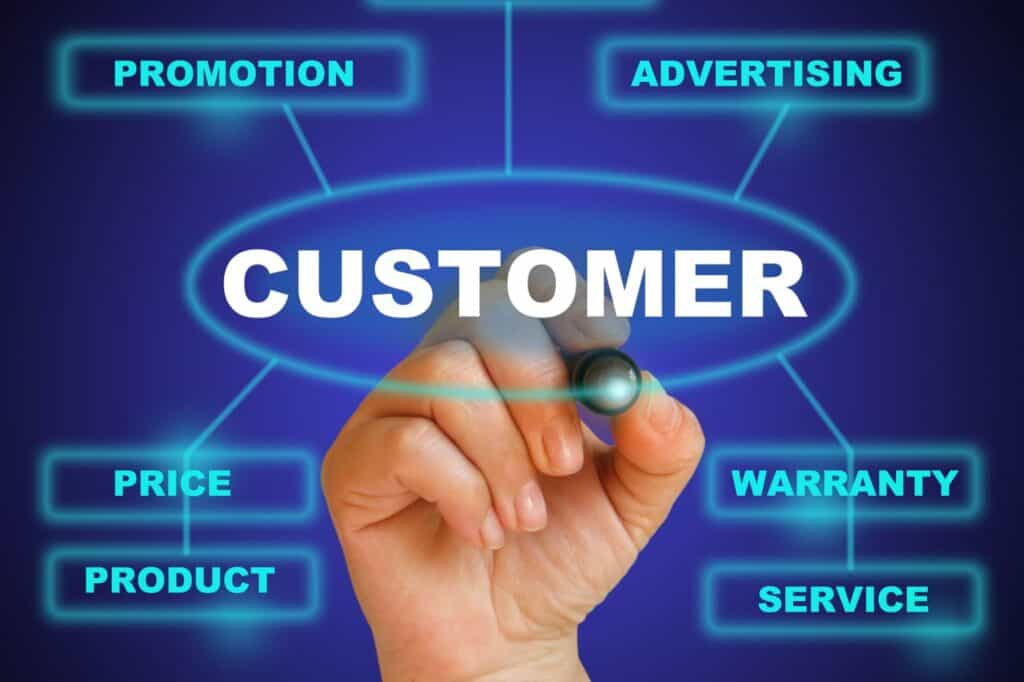It goes without saying that businesses that can’t retain customers face enormous challenges. A loyal customer base and customers who continue to purchase products and services from the same brands can help fuel growth and long-term success in any industry.

However, customer retention and the strategies that keep customers coming back are an art form that requires finesse. Building loyalty in your customer base requires innovative and transparent communication, targeted marketing, and strategic planning.
Is mastering the art of customer retention possible? In short, yes. Let’s take a look at some of the ways you can build customer loyalty and achieve long-term success.
What is customer retention?
Customer retention is the ability a company possesses to grow a foundation of returning customers over time. Retention is measured via metrics that can give company leadership a fairly accurate idea of how many customers return to purchase more products.
Like almost every business success metric, customer retention boils down to relationships. Are you engaging with your customers through every point of contact on their customer journeys? Do you ensure their satisfaction or take steps to increase customer satisfaction?
If you’ve answered “yes” to these questions, you’ve already taken the first step toward creating a loyal customer base. If you haven’t yet implemented these measures, there’s still hope — you have the ability to course correct.

Why customer retention is vital for your business
Even the most innovative, cutting edge products and services require sales and customer engagement to grow brand recognition and increase a company’s ROI (return on investment). Customer retention can help you bring in new customers, and increase the loyalty of your existing customers.
Once you’ve identified your target consumer base and implemented retention strategies, you may find your brand takes a giant leap forward.
Why sales and customer retention are not the same
Businesses that focus on sales above all else may see an initially large ROI, but without a customer-centric approach to increasing sales, may find that profit and revenue take a significant hit.
As noted in Harvard Business Review, a focus on sales or metrics alone can work against a company and allow leadership to lose sight of meeting the customers’ needs. Some examples of a misguided focus on sales include:
- The Lehman Brothers repurchase agreements:
Lehman Brothers, the now infamous international financial services firm masked $50 billion in loans as inflated sales numbers which ultimately led to bankruptcy and ruin.
- Waste Management fake sales:
In 1998, Waste Management fraudulently reported $1,7 billion in revenue, which led to hefty fines from the Securities and Exchange Commission (SEC) and $457 million in a class action lawsuit.
- Wells Fargo bogus accounts:
Wells Fargo employees’ opened 3.5 million credit or deposit accounts in customers’ names. This allowed the sales and retention metrics to go through the roof. However, it cost the national bank over $3.25 billion in legal costs and Federal Reserve fines.
What are customer retention metrics?
Customer retention metrics are the tools used to measure what percentage of customers continue to purchase from the same brand. You should choose the metrics you use based on the goals you hope to achieve.
For example, clearly define what successful retention looks like for your brand, and then choose the metrics that will allow you to collect pertinent data. Customer journey mapping and customer relationship management are two fantastic metrics that may be difference makers in measuring customer retention.
Why customer retention metrics matter
Although metrics are not the only measure of success for company leadership and it’s easy to become too focused on numbers, customer retention metrics do matter. These metrics can help you gauge the aspects of the customer experience you’re getting right, and target areas that need improvement.
Here’s what customer retention metrics can do for your brand:
- Help you to upsell to existing customers
- Generate customer referrals
- Enhance the customer journey
- Focus customer journey-mapping
- Helps to increase revenue
- Stabilizes revenue stream
- Increases brand recognition and positive customer reviews

How to master the art of customer retention
Great leaders care about foundational customers and creating a customer-driven, customer-centric company culture. Customer retention metrics can fine tune your business and marketing strategies. The art of customer retention allows you to see customer loyalty as a direct reflection of your success.
Mastering the art is based on the ability to nurture relationships with existing customers to build brand loyalty. How can you accomplish this? Here are some of the best strategies and practices for customer retention, along with examples of brands that have mastered the art.
Strategies and practices to keep customers coming back
Customer retention is a cost-effective solution to boost sales without constantly pouring all of your resources into acquiring new customers. However, some customer retention methods work better than others.
Strategies and practices that you can implement today to master the art of customer retention include:
- Building an excellent and efficient customer service department:
Customer service agents often get a bad rep, but your customer service department is a pivotal part of customer retention. A negative interaction with a disinterested, uninformed, rude, or ineffective customer service agent can instantaneously destroy customer loyalty.
- Creating a customer-centric culture:
Making customers the center of your brand’s culture requires you to address their pain points via your products and through your marketing campaigns. The customer needs a way to effectively communicate their experience with your brand — whether through website feedback, customer surveys, or online reviews.
Your brand’s communication and engagement with customers should be transparent and effective. Customers who are valued become customers who are loyal.
- Customer journey mapping:
A crucial component of innovative retention strategies, customer journey mapping provides a visualization of every point of contact for potential and active customers.
- Social media platforms:
Actively use your social media accounts to promote products, publish inspiring and engaging content, and gain customer feedback. This allows your customers to feel seen and heard, and can help create loyalty to your brand.
- Avoid solely transactional relationships:
Personalize your customers’ experiences by going beyond transactional engagement only. This means actively engaging customers from pre-sale through post-purchase. A loyalty program is an excellent way to retain customers.
Examples of customer retention mastery
Startups, along with family-owned and small businesses can excel in customer retention as much as (if not more so) their larger counterparts. Similarly, there are many large corporations that miss the mark when it comes to establishing customer loyalty for long-term success.
However, many nationally and globally recognized brands have mastered the art of customer retention and have grown and excelled as a result. Here are just a few inspiring and innovative examples:
- Amazon:
The mega platform leads the way in cutting edge customer retention. For example, Amazon members receive exclusive deals and lower prices on offered products, and are often asked for feedback.
The brand also personalizes the experience of Prime members by offering specific product suggestions. Amazon boasts a staggering 98% customer retention rate.
- Ikea:
The Swedish furniture brand is known for its high-quality, yet low cost products. However, Ikea is also known for furniture that proves difficult to assemble. Yet the company has still built a loyal customer base. How?
Ikea isn’t afraid to course correct their customer retention strategies. For example, to reduce customer complaints and create successful customer experiences, Ikea offers interactive design tools and video assembly tutorials on its website.
- Apple:
From iPhones to Macs, Apple’s ground-breaking products continue to drive customer retention. However, fierce loyalty to the tech giant is also due to Apple’s excellent customer engagement.
For example, Apple gives customers numerous ways to provide feedback, tweaks and improves products based on customer experiences, and provides excellent customer service both online and in physical stores.
Mastering the art of customer retention and building strong customer loyalty can set you up for long-term success. By using valuable metrics and implementing customer-centric business practices and marketing strategies, you may see an exponential increase in loyal customers.
Are you ready to retain customers and grow your business? Connect with Ryan Niddel today.
Ryan is Ohio’s top growth specialist, serves as a board member for multiple companies, and is the CEO of MIT45. He understands how innovative leadership, breakthrough thinking, and a growth mindset are vital to cultivate customer retention and lasting success.



